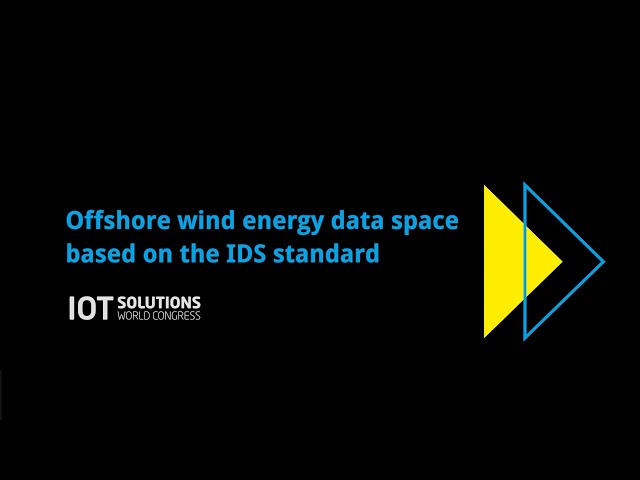Wind energy data spaces based on IDS architecture were featured at the recent IoT Solutions World Congress in Barcelona, demonstrating the importance of data for energy generation. The use cases focused on offshore wind farms. Wind turbine operational data is an excellent data source to optimize technologies and further reduce costs for the energy transition. However, currently, only wind farm operators and wind turbine manufacturers have access to the data collected from the turbines. Many players in the wind energy value chain do not have access, putting them at a disadvantage in developing new digitized products and services, as well as predictive maintenance solutions.
IDS architecture-based data space to gain trust
“All the stakeholders win when the data is shared,” emphasizes Begoña Molinete Cuezva of the Basque Energy Cluster. “This is where energy data spaces and IDS architecture can make a difference in unlocking the true potential of this operational data through sovereign data sharing.” The energy data space projects Enershare, Omega-X, Platoon, and the Basque Energy Cluster are dedicated to improving the current situation. A wind turbine demonstrator at the IoT congress illustrated the complex technical situation.
“At Platoon, we developed the digital twin, which is based on actual physical and data-driven models to enable root cause analysis, full diagnostics, and an overall predictive maintenance certainty,” says Wesly Jacobs of Vrije University in Brussels. “That will enable OEMs and wind turbine operators to increase their efficiency.”
A digital twin is a digital replica that simulates the behavior of a physical asset. Real-time data is fed into the digital twin and compared with theoretical parameters under the same working conditions. A digital twin allows for the diagnosis and prediction of failures. The valuable plant can then be adapted to real operation conditions and maintained in a forward-looking and cost-avoiding manner.
Improved business opportunities on the European level
The aim of the projects is to create energy data spaces at the European level, along with other initiatives such as the Data Spaces Support Centre (DSSC). Erik Maqueda of Omega-X describes a key goal: “To ensure interoperability at different levels such as security, semantics, and also to ensure interoperability across projects.” The projects foster data-driven innovation in the offshore wind energy industry along its entire value chain through secure data sharing. In this way, they advance the decarbonization of the economy. The IDS architecture strengthens trust mechanisms for data privacy and security, empowering all data producers and users. This provides the tools to create new business models for the sustainable provision and commercialization of data. And it all just started with the blowing of the wind.



